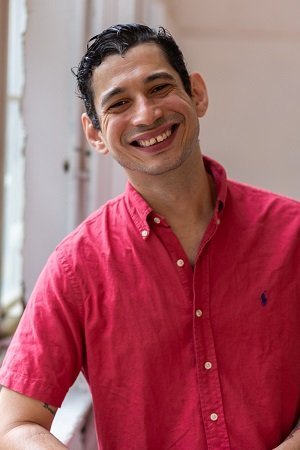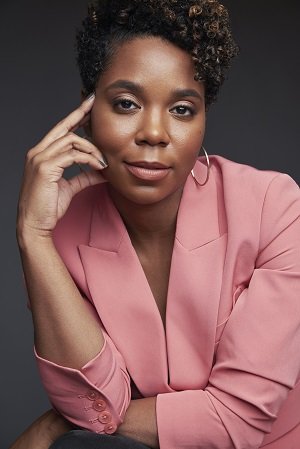Where do ideas for plays come from? How do you develop a play? How is an EST/Sloan play different?
Playwrights! Join us on Monday, November 20, 2023, at 7:30 PM for the 2023 EST/Sloan Artist Cultivation Virtual Event, the annual far-ranging and free-wheeling discussion among scientists and playwrights about science, storytelling, and what makes plays work. This year’s event will be online and is free for any playwright interested in developing a play about science or technology. Registration is required. Once registered, you will receive the event access link in your confirmation email. You can register here.
WHAT MAKES A PLAY ABOUT SCIENCE GREAT?
“To stimulate artists to create credible and compelling work exploring the worlds of science and technology and to challenge the existing stereotypes of scientists and engineers in the popular imagination.”—this has been the mission of The Ensemble Studio Theatre/Alfred P. Sloan Foundation Science & Technology Project (EST/Sloan Project, for short) for the past 24 years. Over that time the EST/Sloan Project has awarded more than $3 million in grants to some 300 playwrights and theater companies. More than 150 productions of EST/Sloan-developed plays have been mounted nationwide. Commissions range from $5,000 to $10,000.
Applications for this year’s EST/Sloan commissions are currently open and will be accepted through December 15, 2023. You can view previous commission recipients on the EST/Sloan webpage.
Two related events culminate each EST/Sloan season:
1) The First Light Festival is a month-long series of readings and workshops that showcase plays in development, and
2) A full mainstage production of at least one work. Recent mainstage productions have included Smart (2023) by Mary Elizabeth Hamilton about AI technology and trust, what you are now (2022) by Sam Chanse about memory and trauma, Behind the Sheet (2019) by Charly Evon Simpson about how American gynecology began with experiments on slaves (a NY Times Critic’s Pick), BUMP by Chiara Atik (2018) on pregnancy and childbirth, SPILL (2017) by Leigh Fondakowski on the Deepwater Horizon disaster, Boy (2016) by Anna Ziegler on sexual identity, Please Continue (2016) by Frank Basloe on Stanley Milgram’s obedience experiments, Informed Consent (2015) by Deborah Zoe Laufer on scientific research and Alzheimer’s, Fast Company (2014) by Carla Ching on game theory and confidence games, Isaac’s Eye (2013) by Lucas Hnath on scientific method and rivalry, Headstrong (2012) by Patrick Link on sports and concussions, and Photograph 51 (2010) by Anna Ziegler about Rosalind Franklin’s role in the discovery of DNA.
This year's Artist Cultivation Event panelists include:
Dr. Mandë Holford is a Professor in Chemistry at Hunter College and CUNY-Graduate Center, with scientific appointments at The American Museum of Natural History and Weill Cornell Medicine. Her joint appointments reflect her interdisciplinary research, which goes from mollusks to medicine, combining chemistry and biology to discover, characterize, and deliver novel peptides from venomous marine snails for manipulating cellular physiology in pain and cancer. Her laboratory investigates the power of venom to transform organisms and to transform lives when it is adapted to create novel therapeutics for treating human diseases and disorders. She is active in science education, advancing the public understanding of science, and science diplomacy. She co-founded Killer Snails, LLC, an award-winning EdTech learning games company. Her honors include being named: a 2023 NIH Pioneer Awardee, a 2020 Sustainability Pioneer by the World Economic Forum, Breakthrough Women in Science by the Howard Hughes Medical Institute and NPR’s Science Friday, a Wings Women of Discovery fellow, an NSF CAREER awardee, a Camille Dreyfus Teacher-Scholars, and a fellow of the California Academy of Sciences. Her Ph.D. is from The Rockefeller University, USA.
Dr. Daniela Schiller is a Professor in the Department of Psychiatry, the Nash Family Department of Neuroscience, and the Friedman Brain Institute at the Icahn School of Medicine at Mount Sinai. Her research is focused on how the brain represents and modifies emotional memories. Schiller got her PhD in Tel Aviv University where she developed a laboratory model for negative symptoms of schizophrenia. She then continued to do a postdoctoral fellowship at New York University where she examined methods for emotional memory modification in the human brain. Schiller joined Mount Sinai in 2010 and has been directing the affective neuroscience laboratory since. Her lab has delineated the neural computations of threat learning, how the brain modifies emotional memories using imagination, and the dynamic tracking of affective states and social relationships. Schiller’s work has been published in numerous scholarly journals, including Nature, Neuron, Nature Neuroscience, and the Proceedings of the National Academy of Sciences. She is a Fulbright Fellow and a Kavli Frontiers of Science Fellow, and has been the recipient of many awards, including the New York Academy of Sciences’ Blavatnik Award, and the Klingenstein-Simons Fellowship Award in the Neurosciences.
Nelson Diaz-Marcano is a Puerto Rican NYC-based theater maker, advocate, and community leader whose mission is to create work that challenges and builds community. His play, LAS BORINQUEÑAS, will be the 2024 EST/Sloan Mainstage Production in April 2024. He currently serves as the Literary Director for the Latinx Playwright Circle where he has helped develop over a 100 plays in the past three years. His plays have been developed by the Ensemble Studio Theatre, The Road Theatre Company, Pipeline Theatre Company, Clubbed Thumb, The Lark, Vision Latino Theater Company, The Orchard Project, The William Inge Theatre Festival, Classical Theatre of Harlem, and The Parsnip Ship, among others. Recent credits include: World Classic (Bishop Theatre Arts Center), Y Tu Abuela, Where is She? Part 1 (CLATA), When the Earth Moves, We Dance (Clubbed Thumb, Teatro Vivo), The Diplomats (Random Acts Chicago), Paper Towels (INTAR), Misfit, America (Hunter Theatre Company), I Saw Jesus in Toa Baja (Conch Shell Productions), and Revolt! (Vision Latino Theatre Company).
Anna Ziegler’s plays include the widely produced Photograph 51 (West End, directed by Michael Grandage and starring Nicole Kidman; named the number one play of 2019 by the Chicago Tribune; winner of London’s WhatsOnStage Award for Best New Play; available on Audible and in Methuen Drama’s Modern Classics series), The Last Match (Roundabout; Old Globe; Writers Theatre), The Wanderers (Old Globe; Roundabout; City Theatre; Gesher Theater (Israel); Ernst Deutsch Theater (Germany); Craig Noel Award for Outstanding New Play), A Delicate Ship (NY Times Critic’s Pick), Actually (Geffen Playhouse; Williamstown; Manhattan Theatre Club; Trafalgar Studios in London and many more; L.A. Ovation Award winner for Playwriting for an Original Play). Bloomsbury/Methuen Drama has published two collections of her work entitled Anna Ziegler: Plays One and Anna Ziegler: Plays Two. She is developing television and movie projects with Paramount, Defiant by Nature and Leviathan Productions.
Moderator
Naomi Lorrain is a Harlem-based playwright/actor. She is a 2022-2023 member of the Page 73 writers group, Interstate 73. She was a writer for the 2022 Disney Television Discovers: Talent Showcase. She is an AUDELCO Awards nominee and a NY Innovative Theatre Awards nominee for Best Lead Actress for Behind the Sheet and Entangled, respectively. Theater: Daphne (LCT3), La Race (Page 73/WP), Mark it Down, Song for a Future Generation (Williamstown Theatre Festival), Behind the Sheet (Ensemble Studio Theatre), What To Send Up When It Goes Down (The Movement Theatre Company). TV: "Orange is the New Black" (Netflix), "Elementary" (CBS), "The Good Fight" (CBS All Access), "Madam Secretary'' (CBS).





































































































































